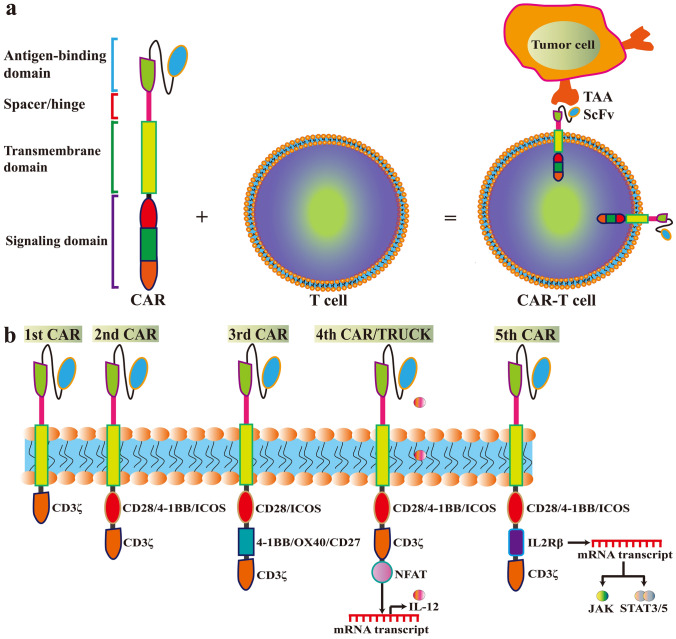Fig. 1.
The structure and generation of chimeric antigen receptor (CAR)-T cells. a The CAR contains an extracellular antigen-binding domain, an extracellular spacer/hinge sequence motif, a transmembrane (TM) domain, and an intracellular signaling domain. The single-chain variable fragment (scFv) recognizes tumor-associated antigens (TAAs). The length of the spacer/hinge region can be adjusted to optimize the distance between CAR-T cells and targeted tumor cells for CAR signal transduction. The TM domain along with the spacer/hinge region, anchors the CAR to the cellular membrane. The signaling domain is an intracellular T-cell activation complex consisting of CD3ζ and many costimulatory molecules, which trigger antigen binding and modulate the downstream signaling cascade of T-cell activation. b In each new generation of CAR, signaling and applications are modified. The first generation of CARs included the scFv portion and the signaling endodomain of CD3ζ. The second generation of CARs added one costimulatory molecule (e.g., CD28, 4-1BB [CD137], and ICOS (inducible costimulator; CD278) to increase the persistence. The third generation of CARs contains CD3ζ and two costimulatory domains (e.g., CD28/ICOS and 4-1BB/OX-40/CD27). The fourth generation of CARs (also called TRUCKs) contains a nuclear factor of activated T cells (NFAT) domain, which induces a large amount of cytokines (e.g., IL-12). The fifth generation of CARs is based on the second generation, with the addition of a fragment of IL-2 receptor β (IL-2Rβ). The IL-2Rβ fragment can induce the production of Janus kinases (JAKs) and signal transducer and activator of transcription (STAT)-3/5 by mRNA transcription

